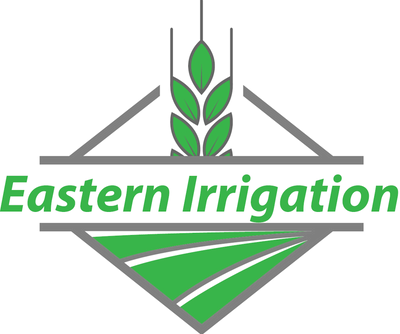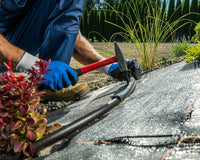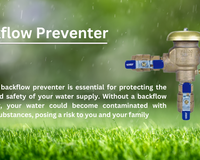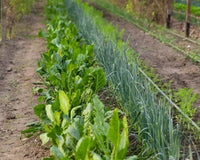As water becomes an increasingly precious resource, efficient water management through proper irrigation systems is crucial for sustainable agriculture, lush gardens, and well-maintained landscapes.
In this article, we will delve into the fundamental components that make up a reliable irrigation system, the various types available, installation tips, and essential maintenance practices.

Whether you're a seasoned farmer, a landscaping enthusiast, or a homeowner looking to optimize your watering system, this guide is for you.
Irrigation System Essentials
An effective irrigation system is a vital asset for any agricultural or landscaping venture. Let's explore the irrigation system essentials that form the backbone of successful water management.
1. Water Source
At the core of any irrigation system is a reliable water source. Before choosing an irrigation system, you must first determine the water source available.
This could be a natural water supply like a river, lake, or well, or it could be municipal water.
Make sure to choose the correct pump for your needs
Knowing your water source will help you determine the appropriate system and avoid unnecessary costs.

2. Types of Irrigation Systems
There are several types of irrigation systems, each suited for specific applications. Some common systems include:
-
Drip Irrigation: This system delivers water directly to the root zone of plants, reducing water wastage and ensuring efficient use.
-
Sprinkler Irrigation: Sprinklers distribute water over a designated area, making it ideal for large agricultural fields and lawns. Choose if you need Spray Heads or Rotors
-
Surface Irrigation: Water is applied over the soil surface and allowed to flow across the field, suitable for level or slightly sloping terrain.
-
Subsurface Irrigation: This system delivers water underground through a network of pipes, minimizing evaporation and weed growth.
3. Design and Planning
A well-designed irrigation system is essential for optimal water distribution. Factors such as soil type, terrain, crop or plant type, and water availability must be considered during the planning phase. The goal is to ensure uniform water distribution and avoid waterlogging or dry spots.
4. Irrigation Controllers
An irrigation controller acts as the brain of your system, automating watering schedules based on specific parameters such as time of day, weather conditions, and plant water needs.
Modern controllers offer advanced features like remote access through smartphone apps, making it convenient to manage your system from anywhere.
5. Pipes and Distribution Networks
The choice of pipes and distribution networks is crucial to prevent water loss and ensure longevity. High-quality pipes that match the water pressure requirements and resist wear and tear are essential. Properly installed distribution networks, including pipes, valves, and emitters, ensure efficient water flow to the entire irrigation system.
6. Emitters and Nozzles
Emitters and nozzles control the rate and pattern of water distribution. They come in various types, each suited for specific plants or areas. Choosing the right emitters and nozzles is essential to avoid over or under-watering and promote healthy plant growth.
7. Backflow Prevention
Backflow prevention devices are critical to protect the water supply from contamination. These devices prevent the backflow of water from the irrigation system into the main water supply, ensuring the safety of potable water.
8. Rain Sensors
Rain sensors are valuable additions to any irrigation system. These devices detect rainfall and temporarily pause or adjust the watering schedule, preventing water wastage and potential overwatering.
9. Mulching
Mulching around plants helps retain soil moisture, reducing the frequency of irrigation. It also suppresses weed growth, conserving water for the intended plants.
10. Smart Water Management Technologies
Advancements in technology have given rise to smart water management solutions. These systems use real-time data, weather forecasts, and soil moisture sensors to optimize water usage, leading to significant water savings and improved plant health.

11. Irrigation Scheduling
Developing a proper irrigation schedule is essential to ensure that plants receive the right amount of water without wasting any resources. Factors such as plant type, soil moisture levels, and weather conditions should be considered when creating a schedule.
12. Regular Maintenance
To keep your irrigation system functioning optimally, regular maintenance is necessary. This includes inspecting and cleaning filters, checking for leaks, and ensuring proper functioning of valves and emitters.
13. Winterizing the System
In regions with freezing temperatures, winterizing the irrigation system is crucial to prevent damage. Properly draining the pipes and protecting vulnerable components ensures that the system remains intact during the colder months.
14. Water Auditing
Performing periodic water audits helps identify inefficiencies and areas for improvement in your irrigation system. Adjustments based on audit results can lead to significant water and cost savings over time.
15. Sustainable Practices
Implementing sustainable practices in your irrigation system, such as using rainwater harvesting or recycled water, promotes eco-friendly water usage and conservation.
16. Energy Efficiency
Incorporating energy-efficient components, like solar-powered irrigation systems, can reduce operational costs and decrease the system's environmental impact.
17. Irrigation System Maintenance Tools
Having the right tools for irrigation system maintenance is essential for smooth operations. Some tools include pipe cutters, emitters, valve keys, and pressure gauges.
18. Irrigation for Greenhouses
Greenhouses have specific irrigation requirements, and understanding them is essential for successful cultivation and optimal plant growth.
19. Irrigation Troubleshooting
Knowing how to troubleshoot common irrigation system issues, such as clogs, leaks, or uneven watering, can save time and resources.
20. Complementary Irrigation Techniques
Combining different irrigation techniques, such as drip and sprinkler irrigation, can provide enhanced benefits for specific crops or landscapes.

21. Water Conservation Incentives
Many regions offer water conservation incentives and rebates to encourage the adoption of efficient irrigation practices. Being aware of such programs can be advantageous for irrigators.
22. Irrigation and Crop Selection
Understanding the water requirements of different crops is essential when planning irrigation systems for agricultural purposes.
23. Integrating Weather Data
Using real-time weather data and forecasts to adjust irrigation schedules based on current and future weather conditions can optimize water usage.
24. Training and Education
Investing in training and education for irrigation system operators ensures proper system management and maximizes water efficiency.
25. Monitoring and Reporting
Implementing a monitoring and reporting system allows you to track water usage, system performance, and identify areas for improvement.

FAQs
Q: How often should I water my garden using an irrigation system?
A: The frequency of watering depends on factors such as the plant type, soil moisture, and weather conditions. As a general guideline, most gardens require around 1 to 1.5 inches of water per week, divided into two to three watering sessions.
Q: Can I install an irrigation system myself, or should I hire a professional?
A: While some homeowners may choose to install a basic drip system themselves, it's recommended to hire a professional for larger or more complex installations to ensure optimal performance and prevent costly mistakes.
Q: What is the lifespan of an irrigation system?
A: The lifespan of an irrigation system depends on factors such as the quality of components, maintenance, and environmental conditions. With proper care, a well-designed system can last 15-20 years.
Q: How can I prevent overwatering my plants?
A: To prevent overwatering, monitor the soil moisture regularly and adjust the irrigation schedule accordingly. Installing moisture sensors or using smart controllers can help automate this process.
Q: Are there any water-saving incentives for installing water-efficient irrigation systems?
A: Many municipalities and water districts offer rebates and incentives for installing water-efficient irrigation systems, promoting water conservation.
Q: Can I use recycled water for my irrigation system?
A: Yes, if your local regulations permit it, using treated recycled water for irrigation is an eco-friendly and cost-effective option.
Understanding the irrigation system essentials is the first step toward achieving water-efficient, thriving landscapes and bountiful crops.
From selecting the appropriate system to implementing sustainable practices and staying informed about water conservation incentives, optimizing your irrigation practices is both beneficial for the environment and your budget.
Remember to regularly maintain and monitor your irrigation system to ensure its longevity and efficient water use.





